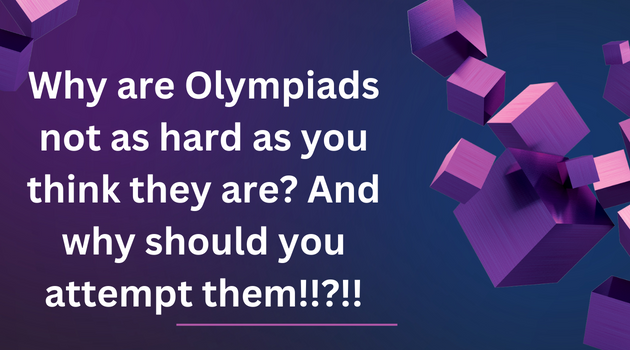FUNDAMENTALS OF COMPUTER- ESSENTIAL POINTS
- A computer is a device that can be instructed to carry out sequences of arithmetic or logical operations automatically. Modern computers have the ability to follow generalized sets of operations, called programs. These programs enable computers to perform an extremely wide range of tasks.
- Charles Babbage, an English mechanical engineer and polymath, originated the concept of a programmable computer. Considered the "father of the computer", he conceptualized and invented the first mechanical computer in the early 19th century.
- Colossus was a set of computers developed by British codebreakers in the years 1943-1945 to help in the cryptanalysis of the Lorenz cipher. Colossus used thermionic valves (vacuum tubes) to perform Boolean and counting operations.
- The U.S.-built ENIAC(Electronic Numerical Integrator and Computer) was the first electronic programmable computer built in the US. Although the ENIAC was similar to the Colossus, it was much faster, more flexible, and it was Turing-complete.
- Central Processing Unit (CPU) : CPU is considered as the brain of the computer. CPU performs all types of data processing operations.
- Control Unit: This unit controls the operations of all parts of the computer but does not carry out any actual data processing operations.
- ALU(Arithmetic Logic Unit) : This unit consists of two subsections namely,
- Arithmetic Section: Function of arithmetic section is to perform arithmetic operations like addition, subtraction, multiplication, and division.
- Logic Section: Function of logic section is to perform logic operations such as comparing, selecting, matching, and merging of data.
- Computer Languages: A programming language is a vocabulary and set of grammatical rules for instructing a computer or computing device to perform specific tasks.
- First Generation Languages -1GLs (Machine language):When human being stared programming, the computer instruction were given to it in a language that it was able to understand easily and is called machine language. The binary language of 1 and 0 is known as Machine language.
- Second Generation Languages- 2GLs (Assembly Language):The first language similar to English was developed in 1950 which was known as Assembly Language or Symbolic Programming Languages. An assembly language is a low-level programming language for microprocessors (CPU) and other programmable devices.
- Third Generation Languages- (3GLs ) (High Level Languages): The languages developed which were nearer to the English language in 1960 were known as High Level languages. The different high level languages are FORTRAN, COBOL, BASIC, PASCAL, PL-1 and many others.
- Fourth Generation Languages- (4GLs) (Query languages):The 3GLs are procedural in nature means HOW the problem get programmed and the procedures require the knowledge of HOW the problem will be solved. Example of 4GL is SQL (Structured Query Language).
- Fifth Generation Language-(5GLs):The 5GLs are designed to make the computer "Smarter". The use of 5GLs language touches on expert systems, computerized collection of the knowledge of many human experts, artificial intelligence and independently smart computer systems. Examples of 5GL are Prolog, OPS5 and Mercury
- Graphical User Interface (GUI) based languages: These are the languages which use a Graphical
User Interface to write, compile & execute the program with ease. Some of them are-
- Visual Basic
- Visual C++
- C# (Pronounced as C sharp)
- Visual Basic.NET
- A computer follows the instructions given by the programmer to perform a specific job. To perform a particular task, programmer prepares a sequence of instructions, known as programs. A program written for a computer is known as Software.
- Types Of Software:
- System Software
- Operating System (Windows,Linux,etc.)
- Device Driver & Language Processor (Compiler,interpreter,etc.)
- Application Software
- General Purpose Software (MS Word,photoshop,etc.)
- Customized Software (Invoice system,Reservation System,etc.)
- Memory or Storage Unit:This unit can store instructions, data, and intermediate results.
- Memory Chips & Moduless
- DIPP ( Dual Inline Pin Package)
- SIMM (Single Inline Pin Module)
- SIPP (Single Inline Pin Package)
- DIMM (Dual Inline Pin Package)
- RIMM (Rambus RAM)
- Types of devices:
- Input devices : In computing, an input device is a piece of computer hardware equipment used to provide data and control signals to an information processing system such as a computer or information appliance. Examples of input devices include keyboards, mouse, scanners, digital cameras and joysticks.
- Output devices : An output device is any peripheral that receives data from a computer, usually for display, projection, or physical reproduction.Printers, visual displays Speakers. Headphones. Screen (Monitor) Printer. Punched card input/output. Punched tape, are the most common type of output device for interfacing to people.
- A switched-mode power supply (switching-mode power supply, switch-mode power supply, switched power supply, SMPS, or switcher) is an electronic power supply that incorporates a switching regulator to convert electrical power efficiently.
- An operating system is the most important software that runs on a computer. It manages the computer's memory and processes, as well as all of its software and hardware. It also allows you to communicate with the computer without knowing how to speak the computer's language.
- Types Of Operating System:
- Batch operating system: The users of a batch operating system do not interact with the computer directly. Each user prepares his job on an off-line device like punch cards and submits it to the computer operator.
- Time-sharing operating systems Time-sharing is a technique which enables many people, located at various terminals, to use a particular computer system at the same time. Time-sharing or multitasking is a logical extension of multiprogramming.
- Distributed operating System Distributed systems use multiple central processors to serve multiple real-time applications and multiple users. Data processing jobs are distributed among the processors accordingly.
- Network operating System A Network Operating System runs on a server and provides the server the capability to manage data, users, groups, security, applications, and other networking functions. The primary purpose of the network operating system is to allow shared file and printer access among multiple computers in a network, typically a local area network (LAN), a private network or to other networks.
- Real Time operating System
A real-time system is defined as a data processing system in which the time interval required to
process and respond to inputs is so small that it controls the environment.
The time taken by the system to respond to an input and display of required updated information is termed as the response time.
There are two types of real-time operating systems.
- Hard real-time systems Hard real-time systems guarantee that critical tasks complete on time. In hard real-time systems, secondary storage is limited or missing and the data is stored in ROM. In these systems, virtual memory is almost never found.
- Soft real-time systems Soft real-time systems are less restrictive. A critical real-time task gets priority over other tasks and retains the priority until it completes. Soft real-time systems have limited utility than hard real-time systems.
Hardware ---------> Operating System ------------> Application Softwares ---------> Users


